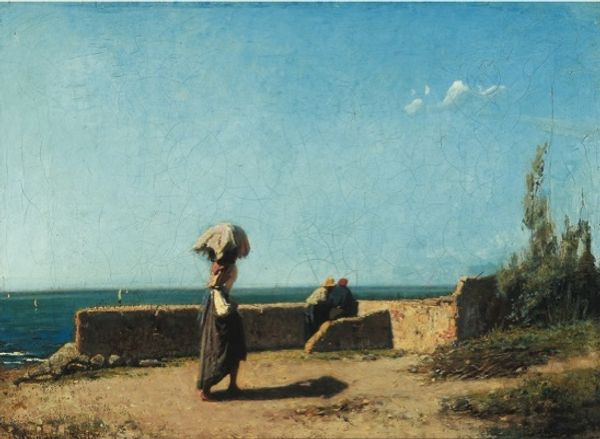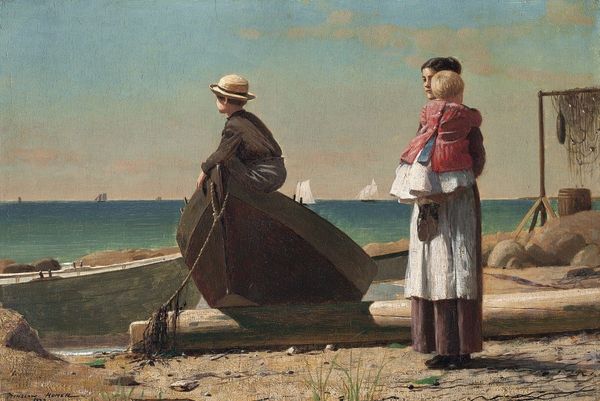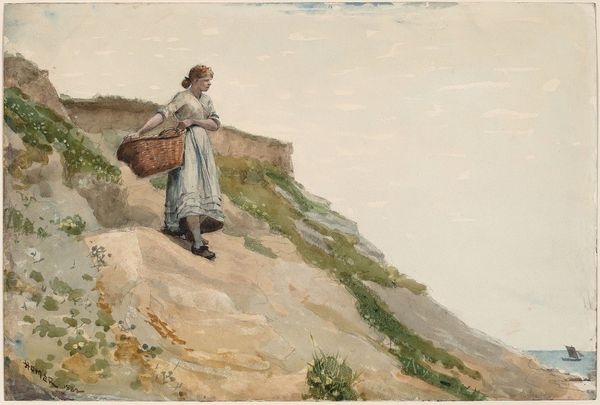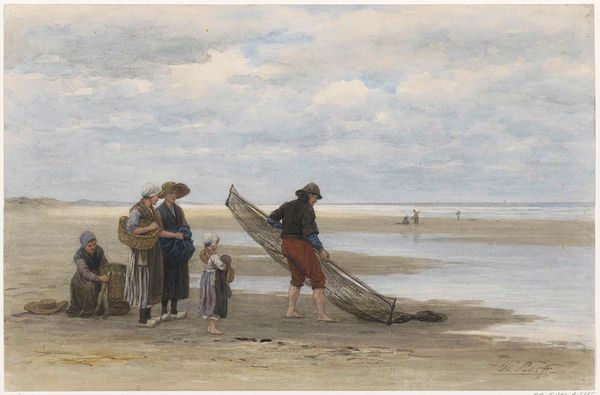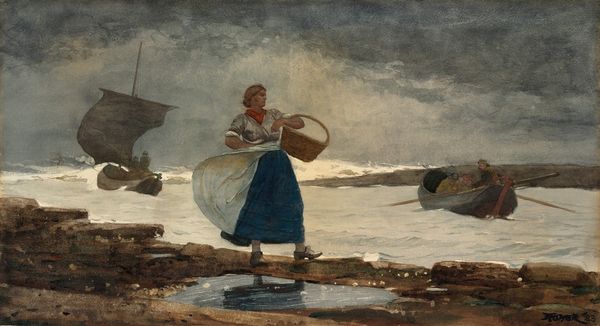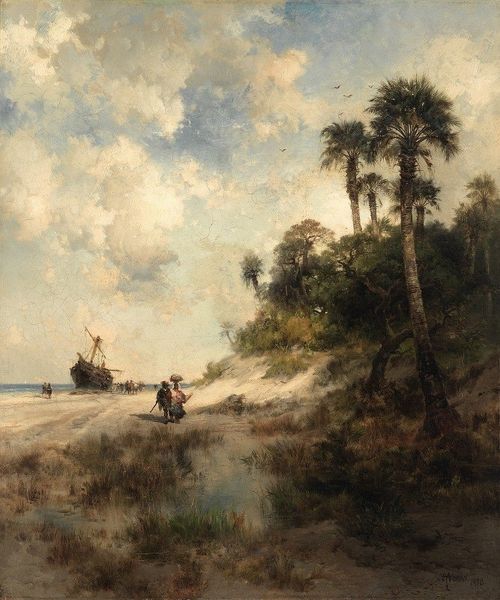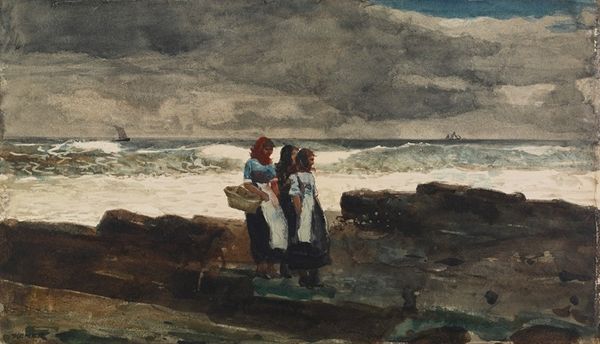
Copyright: Public Domain: Artvee
Curator: This painting exudes a certain stillness. Is it the muted palette, the vast expanse of the sea, or simply the quiet exchange between the figures? Editor: Pissarro created "Two Women Chatting by the Sea, St. Thomas" in 1856. It is rendered in oil paint, very likely en plein air, which would have been somewhat novel for the time in the Danish West Indies. What are your initial thoughts on this early work? Curator: Immediately, I notice the contrast between the light, almost luminous parasol held by one woman, and the deep indigo of the other’s dress. Lightness and darkness, protection and perhaps even vulnerability, are evoked through those simple choices. Editor: Indeed. And placing this work within the context of 19th-century St. Thomas is essential. It was a bustling port, a hub of commerce, but also deeply entangled with the legacies of colonialism and slavery. What stories do you think these women tell us about that place? Curator: Their very presence counters the idealized portrayals one often finds in landscapes of the period. These aren’t allegorical figures, but working women, engaging in everyday conversation. Their headscarves also carry specific weight, signaling their cultural identities within a diverse, complex social environment. It is a kind of defiance against assimilation in a society built on cultural destruction. Editor: It is intriguing to consider that Pissarro, of Sephardic Jewish descent himself, positioned his artistic gaze on these women. Could there have been a degree of shared outsider experience informing this perspective? Curator: It’s a crucial point. Shared experiences of marginalization can create surprising affinities. He doesn't exoticize his subjects, but observes them with a dignified respect that feels quite modern. There's almost an intimacy here. Editor: The landscape itself is equally intriguing; the composition, the light on the water. This island scene seems to function almost like a stage setting for the relationship and figures he wanted to explore. The blurred backgrounds also allow a direct focus on the central idea. Curator: Perhaps it’s the open space, both literally and figuratively, allowing for diverse readings. It seems to call us to ponder deeper questions about representation, identity, and the unspoken dialogues of history. Editor: This piece has definitely expanded my view on Pissarro's less familiar output. His early work deserves so much more. Curator: Agreed. It reveals his unique lens, and that’s what continues to speak to us.
Comments
No comments
Be the first to comment and join the conversation on the ultimate creative platform.
